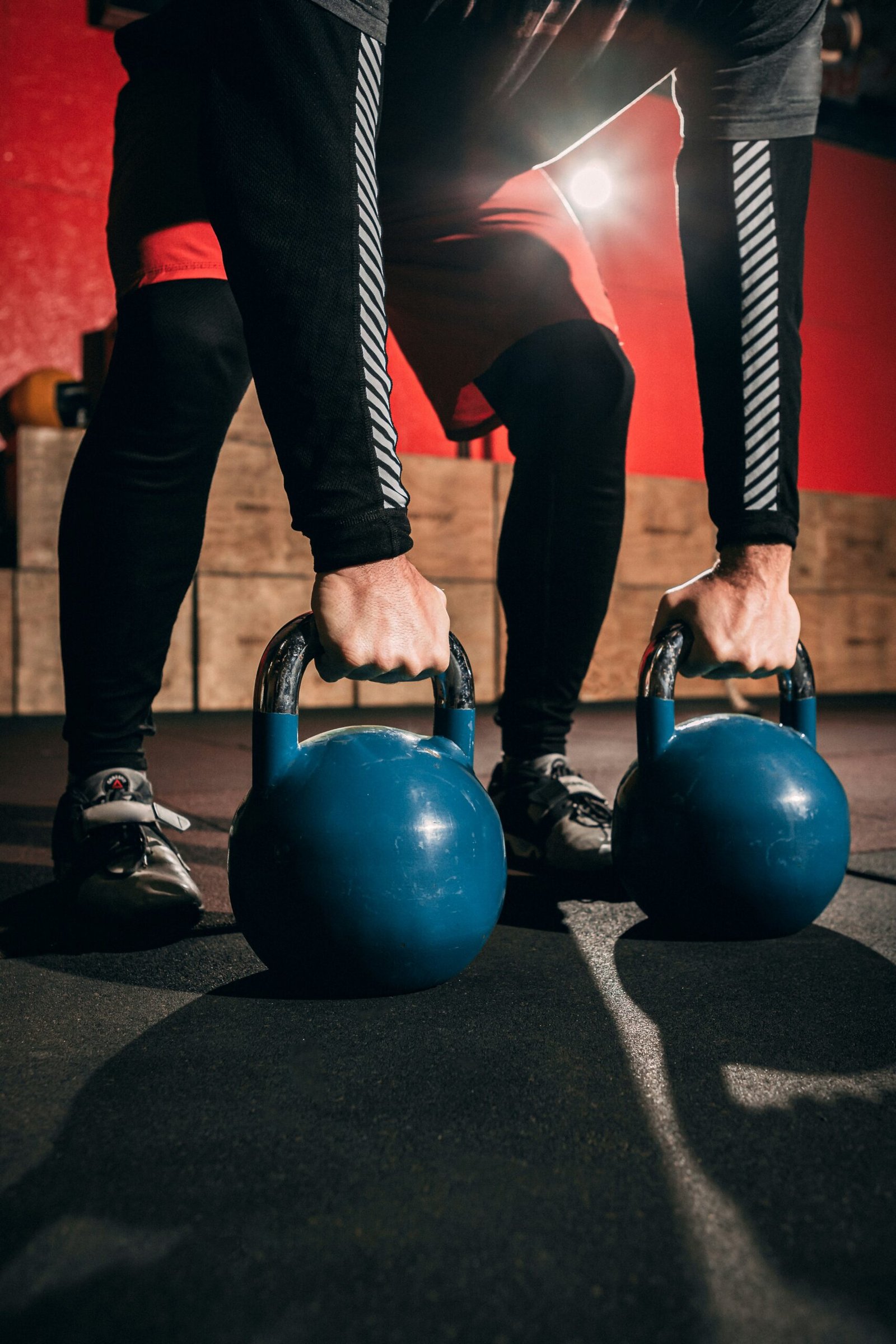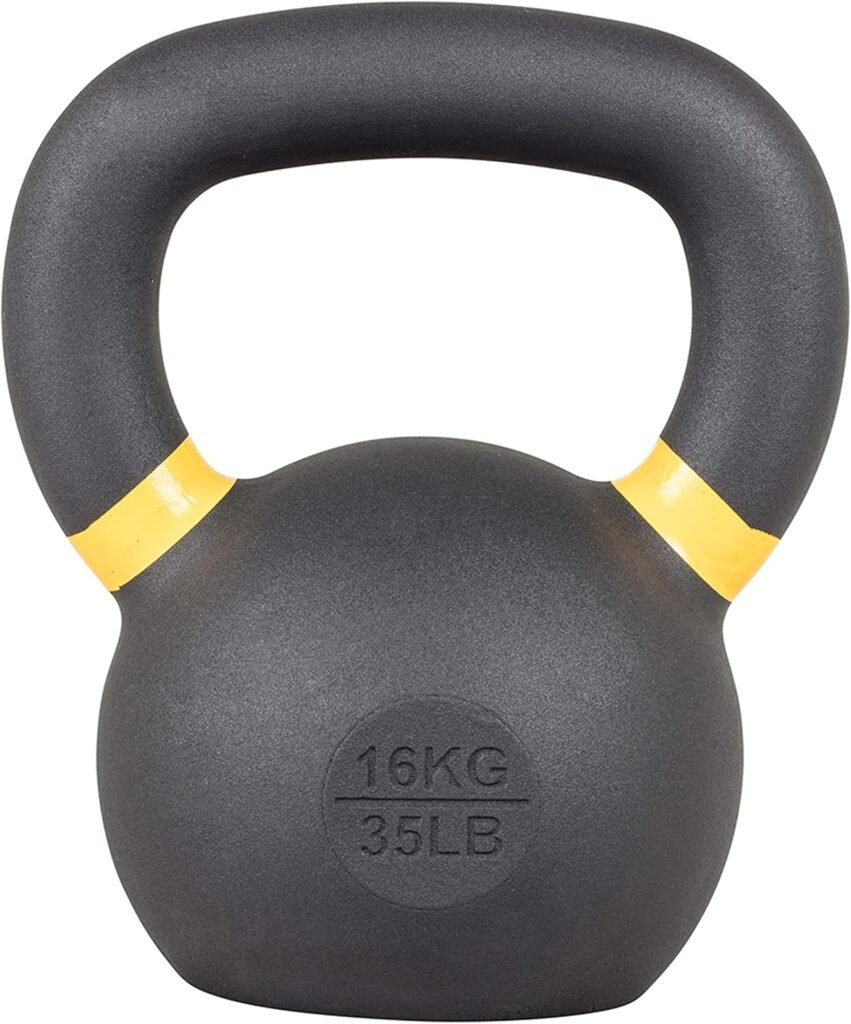Have you ever considered how a balanced back workout can enhance your overall strength and performance? Incorporating kettlebells into your exercise routine can be a game-changer. kettlebell back exercises not only target the muscles in your back but also engage your core, improve your stability, and enhance your functional strength.
You are currently viewing a placeholder content from YouTube. To access the actual content, click the button below. Please note that doing so will share data with third-party providers.
More InformationUnderstanding Kettlebell Back Exercises
Kettlebell exercises provide a unique blend of strength training and cardiovascular conditioning. The design of the kettlebell allows for a range of dynamic movements that can effectively target your back muscles, including the latissimus dorsi, trapezius, and rhomboids.
In this section, you will gain a clearer understanding of why kettlebell workouts are particularly beneficial for back training. Whether you are a beginner or an advanced fitness enthusiast, integrating these exercises into your routine can yield significant results.
Benefits of Kettlebell Workouts for Your Back
Kettlebell workouts offer numerous benefits that go beyond typical cable or dumbbell exercises:
Engagement of Multiple Muscle Groups: Kettlebell movements often require you to engage several muscle groups simultaneously. This engagement not only promotes overall strength but also improves your functional fitness.
Enhanced Grip Strength: The unique shape of kettlebells challenges your grip strength. A strong grip is essential for performing many exercises, not just those targeting the back.
Improved Core Stability: Many kettlebell exercises require maintaining core stability, which can enhance overall strength and reduce the risk of injury in daily activities.
Versatility and Convenience: Kettlebells come in various weights, making them suitable for individuals at all fitness levels. They are also portable, allowing you to perform workouts at home or while traveling.
Cardiovascular Benefits: Kettlebell training can elevate your heart rate, providing cardiovascular benefits alongside strength training.
Key Muscles Targeted by Kettlebell Back Exercises
To better understand how kettlebell back exercises work, it is essential to identify the key muscle groups involved in each movement. This will help you recognize the areas in your back that you are training and how they contribute to your overall strength.
Major Muscle Groups
| Muscle Group | Function |
|---|---|
| Latissimus Dorsi | Responsible for shoulder adduction, extension, and internal rotation. It contributes to the V-shape appearance of the back. |
| Trapezius | Involved in neck and shoulder movement; supports the upper back. This muscle plays a crucial role in stabilizing the shoulder blades. |
| Rhomboids | Located between the shoulder blades, responsible for scapular retraction. They help in maintaining good posture. |
| Erector Spinae | A group of muscles that help with spinal extension and stabilization during lifting movements. |
| Teres Major | Works with the latissimus dorsi to facilitate movement in the upper arms. |
Understanding these muscle groups can help you better appreciate the efficiency of kettlebell training in building a powerful and well-defined back.
Essential Kettlebell Back Exercises
In this section, you will learn about several kettlebell exercises specifically designed to strengthen and tone your back muscles. Each exercise description includes key points related to form and technique for optimal results.
1. Kettlebell Deadlift
The kettlebell deadlift focuses on your lower back, glutes, and hamstrings.
How to Perform:
- Stand with your feet shoulder-width apart, with a kettlebell placed between your feet.
- Hinge at your hips, bend your knees slightly, and grip the kettlebell with both hands.
- Keep your back straight and your chest up as you stand up, thrusting your hips forward.
- Lower the kettlebell back down with control.
Tips:
- Keep the kettlebell close to your body throughout the movement.
- Focus on engaging your glutes and hamstrings as you rise.
2. Kettlebell Bent-Over Row
This exercise targets the upper back and promotes muscular endurance.
How to Perform:
- Stand with your feet hip-width apart, holding a kettlebell in one hand.
- Hinge forward at the hips, keeping your back flat and your chest lifted.
- Pull the kettlebell towards your hip, squeezing your shoulder blade as you row.
- Lower the kettlebell back to the starting position and repeat.
Tips:
- Ensure that you maintain a neutral spine throughout the exercise.
- Alternate between sides after a designated number of repetitions.
3. Kettlebell Clean and Press
This dynamic movement engages multiple muscles and improves overall functional strength.
How to Perform:
- Begin with the kettlebell on the ground between your feet.
- Perform a deadlift to pick the kettlebell up, transitioning into the clean by bringing it to a racked position at your shoulder.
- From the racked position, press the kettlebell overhead.
- Lower the kettlebell back to the racked position and then back to the ground.
Tips:
- Keep your core engaged and your movements fluid.
- Ensure you are using a weight that allows for good form throughout the entire exercise.
4. Kettlebell Single-Arm Row
Targeting the lats, this exercise helps improve unilateral strength.
How to Perform:
- Position yourself in a staggered stance, one foot forward and one back.
- Place one hand on your forward knee for support and hold the kettlebell in the opposite hand.
- Row the kettlebell towards your hip, focusing on squeezing your shoulder blade.
- Return to the starting position and switch sides.
Tips:
- Avoid rotating your torso during the row; keep your shoulders square.
- Focus on proper breathing throughout the movement.
5. Kettlebell Swings
While primarily known for their cardio benefits, kettlebell swings also engage the back muscles effectively.
How to Perform:
- Begin in a standing position with your feet slightly wider than shoulder-width, gripping the kettlebell with both hands.
- Hinge at your hips to swing the kettlebell back between your legs.
- Drive through your hips to propel the kettlebell forward at shoulder level.
- Allow the kettlebell to swing back between your legs, then repeat.
Tips:
- Focus on driving through your hips rather than relying on your arms.
- Maintain a strong core for added stability.
6. Kettlebell Windmill
This exercise integrates core stability with back strengthening.
How to Perform:
- Stand with your feet shoulder-width apart and a kettlebell held overhead in one hand.
- Keep your arm extended while hinging at the hips, reaching your opposite hand down to your ankle or foot.
- Return to the standing position, maintaining the kettlebell overhead.
Tips:
- Keep your gaze focused on the kettlebell to ensure stability.
- Perform the exercise slowly to maintain control.
7. Kettlebell Renegade Row
A more advanced exercise that strengthens multiple muscle groups, including the back.
How to Perform:
- Begin in a push-up position, holding a kettlebell in each hand.
- While stabilizing with one arm, row the other kettlebell towards your hip.
- Alternate sides while maintaining a stable body position.
Tips:
- Keep your body straight and avoid rotating your hips.
- Engage your core to prevent sagging in your lower back.
Integrating Kettlebell Back Exercises into Your Routine
When incorporating kettlebell back exercises into your workout regimen, it’s essential to consider a few critical factors to maximize benefits and minimize the risk of injury.
Frequency and Sets
Aim to incorporate kettlebell back exercises into your routine at least two to three times per week. It’s advisable to perform the following structure:
- Warm-Up: 5-10 minutes of light cardio and dynamic stretching.
- Main Workout: Select 3-4 kettlebell back exercises, performing 3 sets of 8-12 repetitions per exercise.
- Cool Down: 5-10 minutes of stretching, focusing on the muscles worked during your session.
Progression and Variation
To continuously challenge your muscles and promote growth, consider the following:
- Increase Weight: Gradually increase the kettlebell weight as you become comfortable with the movements.
- Modify Reps and Sets: Adjust the number of repetitions and sets based on your fitness goals.
- Add New Exercises: Incorporate new kettlebell exercises to target the back and other muscle groups for a well-rounded regimen.
Common Mistakes to Avoid
When executing kettlebell back exercises, it’s crucial to be mindful of common mistakes that can hinder effectiveness or lead to injury.
Improper Form
Always prioritize proper form over the amount of weight lifted. Poor form can lead to strains or injuries, particularly in the lower back. Focusing on technique will yield better results in the long run.
Rushing Through Sets
Kettlebell exercises are designed for precision. Resist the urge to rush through your repetitions; instead, concentrate on controlled movements to maximize muscle engagement.
Neglecting Core Engagement
Your core plays a significant role in stabilizing your body during kettlebell movements. Failing to engage your core can lead to poor posture and back discomfort. Always maintain core activation throughout each exercise.
Benefits Beyond Strength Training
Kettlebell back exercises offer benefits that extend beyond increasing strength and muscle tone. They can improve functional fitness, enhance athletic performance, and even promote better posture.
Functional Fitness
Functional movements, such as those performed with kettlebells, closely mimic the tasks performed in daily life. Consequently, training this way can lead to improved performance in everyday activities, making you more capable and reducing the risk of injury.
Athletic Performance
Athletes often incorporate kettlebell training to enhance power, strength, and agility. By focusing on back exercises, you can improve your overall athletic performance, whether that involves running, jumping, or other sports-related activities.
Improved Posture
Kettlebell back exercises enhance muscular strength in the upper back, which can contribute to improved posture. Better posture is associated with reduced back pain and enhanced overall body mechanics.

Conclusion
Investing time in kettlebell back exercises can significantly enhance your physical well-being, leading to increased strength, improved posture, and a better overall quality of life. By understanding the benefits and techniques associated with these exercises, you equip yourself with the knowledge to create a balanced workout routine that supports your fitness goals.
Commit to integrating these kettlebell back exercises into your program, and you may soon find yourself reaping the rewards of a stronger, more stable back. Remember to listen to your body, maintaining proper form and technique, and continually challenge yourself as you progress on your fitness journey. Your back will thank you for it.






